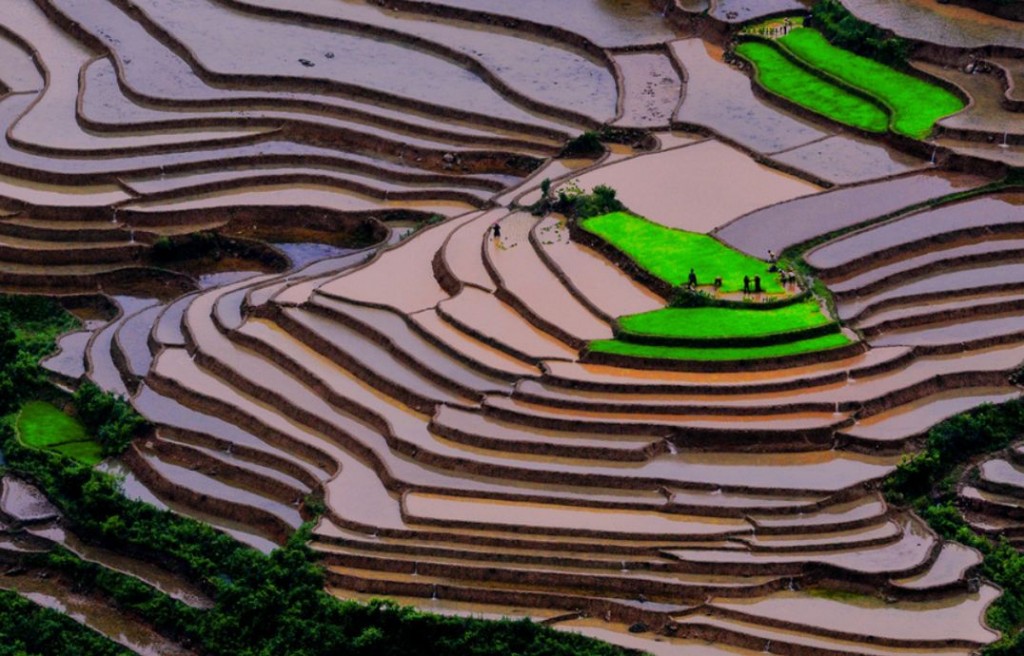Mu Cang Chai: History and Beauty in Terrace Rice Fields

Its stunning terrace rice fields and interesting ethnic minority groups have earned its place in the international world of tourism, but Mu Cang Chai offers even more, making it one of the most visited places today. Mu Cang Chai is a district of Yen Bai Province and is located in the Northern upland region of Vietnam.
It is accessible by plane but the flight is only available from Ho Chi Minh City to Hanoi. Still 280 kilometers away, visitors can opt to take a car, ride the bus or rent a motorbike to reach the capital of Mu Cang Chai. Its globally-recognized terrace rice fields are a golden yellow especially between the months of September and October, its tourism high since this is also the time when the weather is most ideal and people from all corners of the globe want to experience such a special event. The best terrace rice fields at Mu Cang Chai are at Tu Le Valley, Khau Pha Pass, La Pan Tan, Cau Ba Nha and Che Cu Na Communes. If one wants to take the best pictures of the view, between seven to nine in the morning is the ideal time to visit.
Completing all the said rice fields will take around three days though, so visitors may have to stay longer and check in at a hotel. There are a number of hotel and hostels in Mu Cang Chai, but guests have to make their reservations at least one month before if they intend to visit during the peak season because all accommodations tend to be fully booked during this time. The Suoi Mo Hotel at Dien Bien Street, Yen Bai Province is among the best with a three-star rating, but other decent and affordable hotels can also be found at Tu Le Commune, Khau Pha Pass and Nghia Lo Town.
Mu Cang Chai is also known for its ethnic minority groups, specifically the H’mong and Thai. The former can be found at La Pan Tan, declared as an official tourist attraction in 2007 for preserving its culture. One can therefore see a common H’mong house there, with its terrace covered with ripe corns and its vicinity surrounded by wooden cages for pigs and cows. The women are usually housewives and take care of their children while the men go to work at the fields. They have a traditional afternoon break wherein each family goes home, cooks and eats together. They also practice “khen,” a traditional pan-pipe performed only by the men in hopes of catching the women’s interest.
Cau Ba Nha is famous for its “mam xoi,” an immense round terrace rice field located at the top of the mountain. Khau Pha Pass is the pride of Vietnam itself where the clouds are almost reachable while offering a fantastic view of the valleys at the bottom. The Tu Le sticky rice of Muong Lo and green rice flakes of Tu Le Commune, Van Chan District are the most recommended specialties at Mu Cang Chai because of their light sweet and sticky taste and heavenly aroma. One must also sample the salmon, sturgeon pots, fried bumble bees and steamed chicken.
Tao meo is a species of small apples found in the mountainous areas and is highly regarded in Mu Cang Chai because of its ability to treat certain diseases such as stomach pains, high blood pressure and even heart-related sicknesses. It is also said to be ideal for those who are on a diet. High quality tao meos can only be found between September to October, coinciding with the turning yellow of the famed terrace rice fields and best weather at Mu Cang Chai, a perfect time and hole-in-one for anyone visiting the place in the said period.









